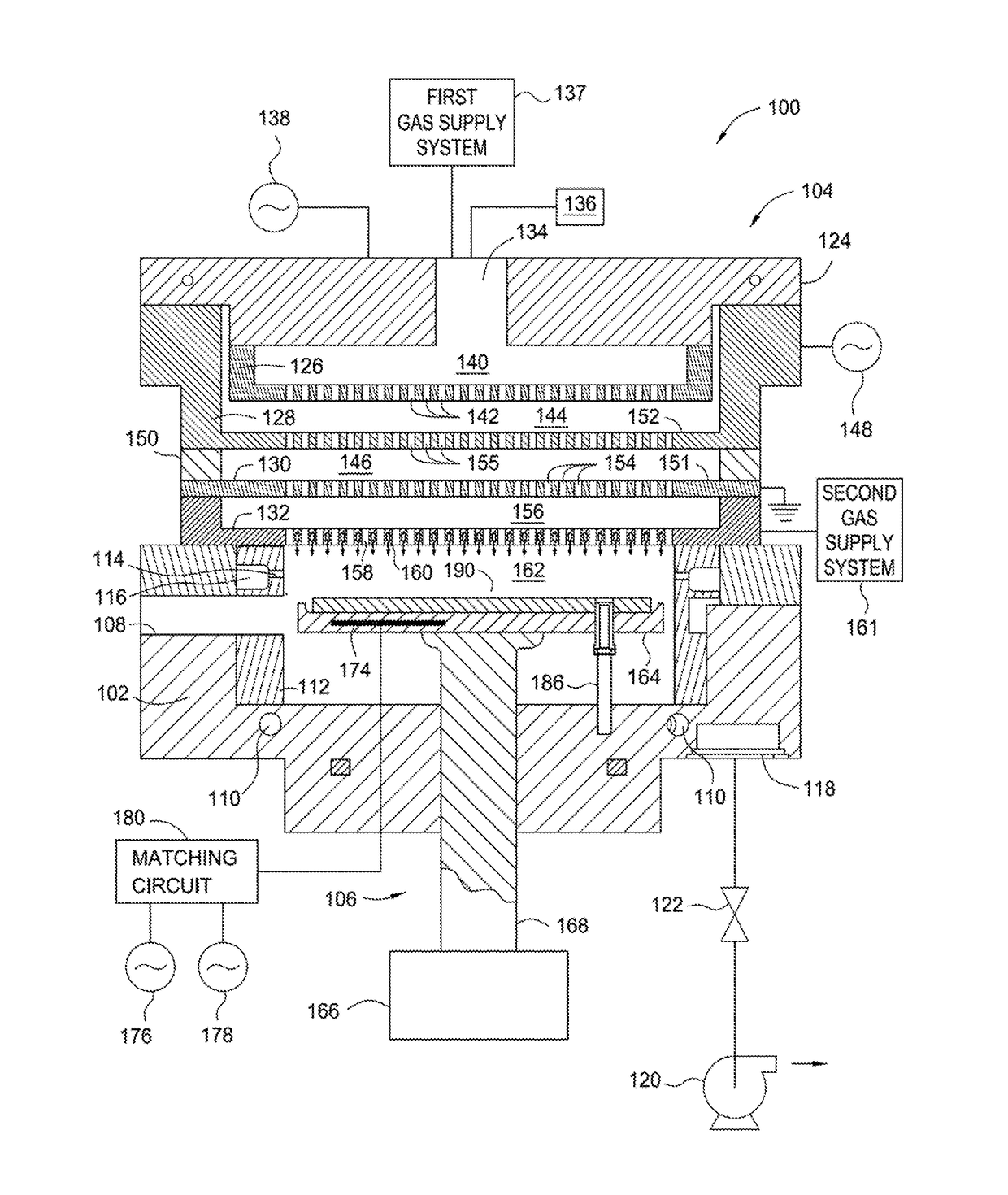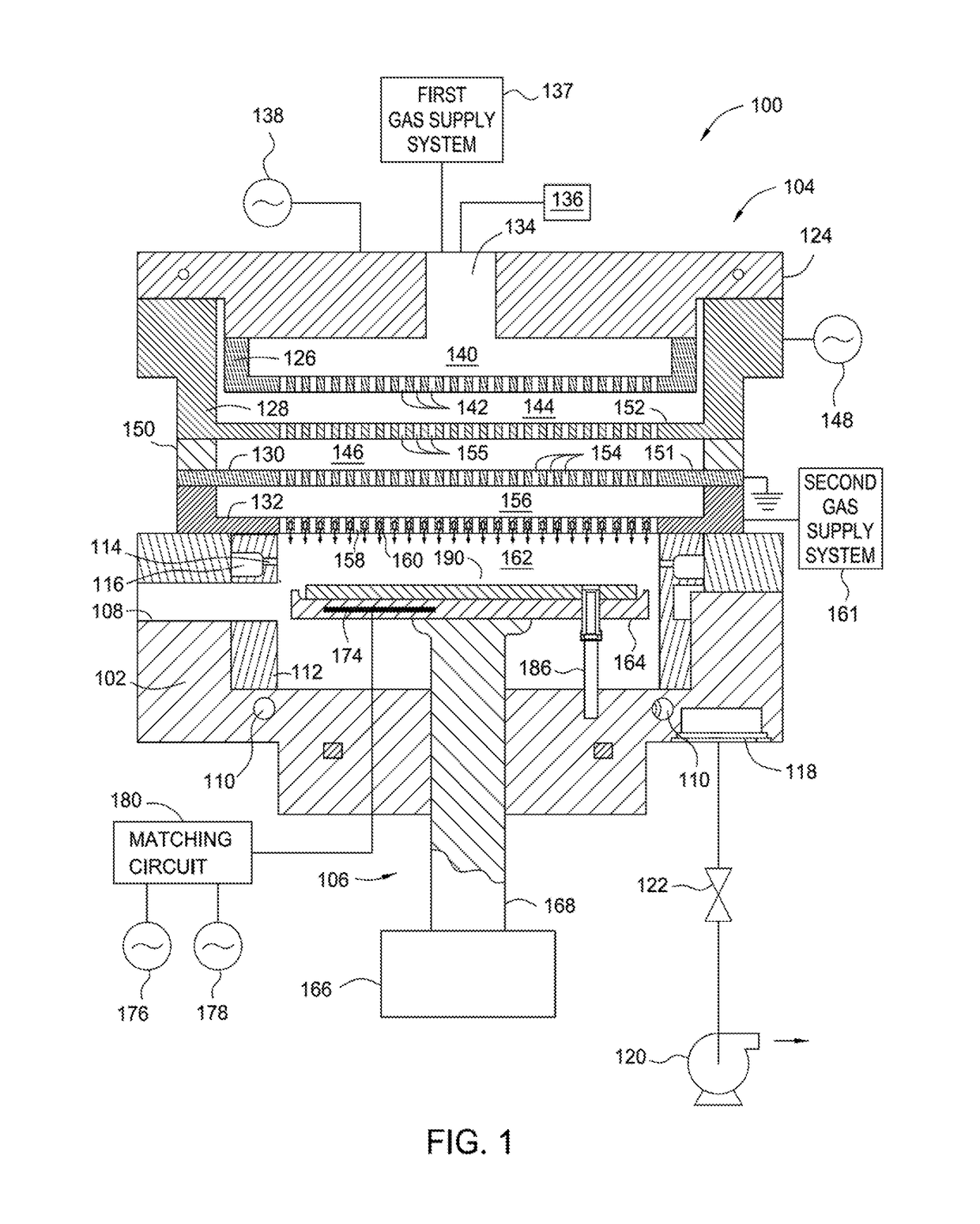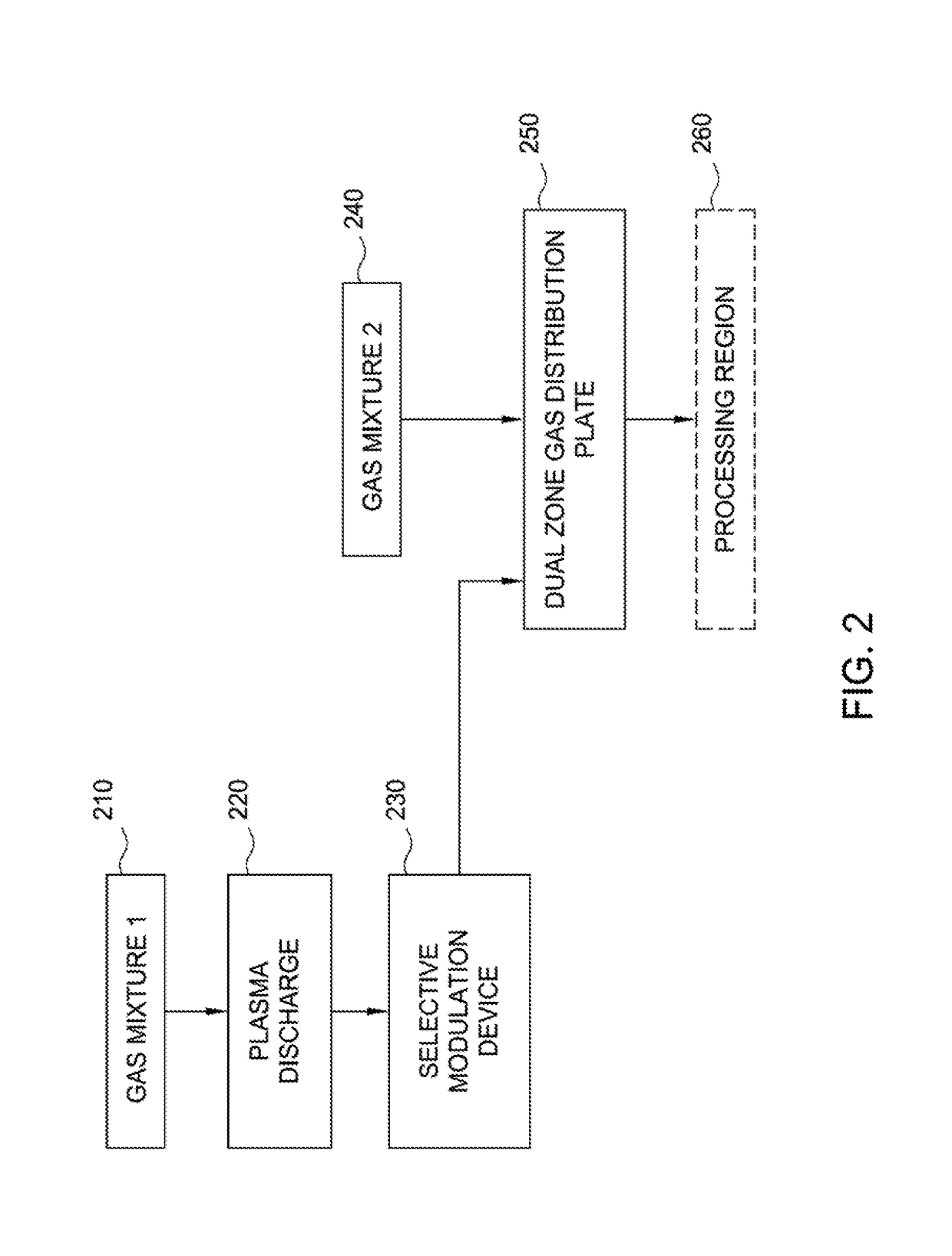Two-step fluorine radical etch of hafnium oxide
a technology of hafnium oxide and fluorine radicals, which is applied in the direction of basic electric elements, electrical equipment, electric discharge tubes, etc., can solve the problems of charge build-up, etching precision, and creating fabrication challenges
- Summary
- Abstract
- Description
- Claims
- Application Information
AI Technical Summary
Benefits of technology
Problems solved by technology
Method used
Image
Examples
examples
[0056]The following non-limiting examples are provided to further illustrate implementations described herein. However, the examples are not intended to be all inclusive and are not intended to limit the scope of the implementations described herein.
[0057]Experimental data depicted in Table 1 verifies that hafnium oxide thickness was reduced using the two-operation doping / etching process described herein. The hafnium oxide atomic count in the solid surface was measured by x-ray photoelectron spectroscopy (XPS) and then hafnium oxide thickness was calculated. Other experimental data, which is not shown, demonstrated that no hafnium oxide thickness reduction was achieved if the doping process was skipped and only the etching process was performed.
TABLE 1Operation 1Operation 2Original HfO2After processtest splitprocess timeprocess timethicknessHfO2 thickness130 sec60 sec14.9 A9.4 A230 sec60 sec 9.4 A6.9 A330 sec 0 sec14.4 A14.4 A
[0058]FIG. 4 is plot 400 depicting a depth profile of a ...
PUM
 Login to View More
Login to View More Abstract
Description
Claims
Application Information
 Login to View More
Login to View More - R&D
- Intellectual Property
- Life Sciences
- Materials
- Tech Scout
- Unparalleled Data Quality
- Higher Quality Content
- 60% Fewer Hallucinations
Browse by: Latest US Patents, China's latest patents, Technical Efficacy Thesaurus, Application Domain, Technology Topic, Popular Technical Reports.
© 2025 PatSnap. All rights reserved.Legal|Privacy policy|Modern Slavery Act Transparency Statement|Sitemap|About US| Contact US: help@patsnap.com



